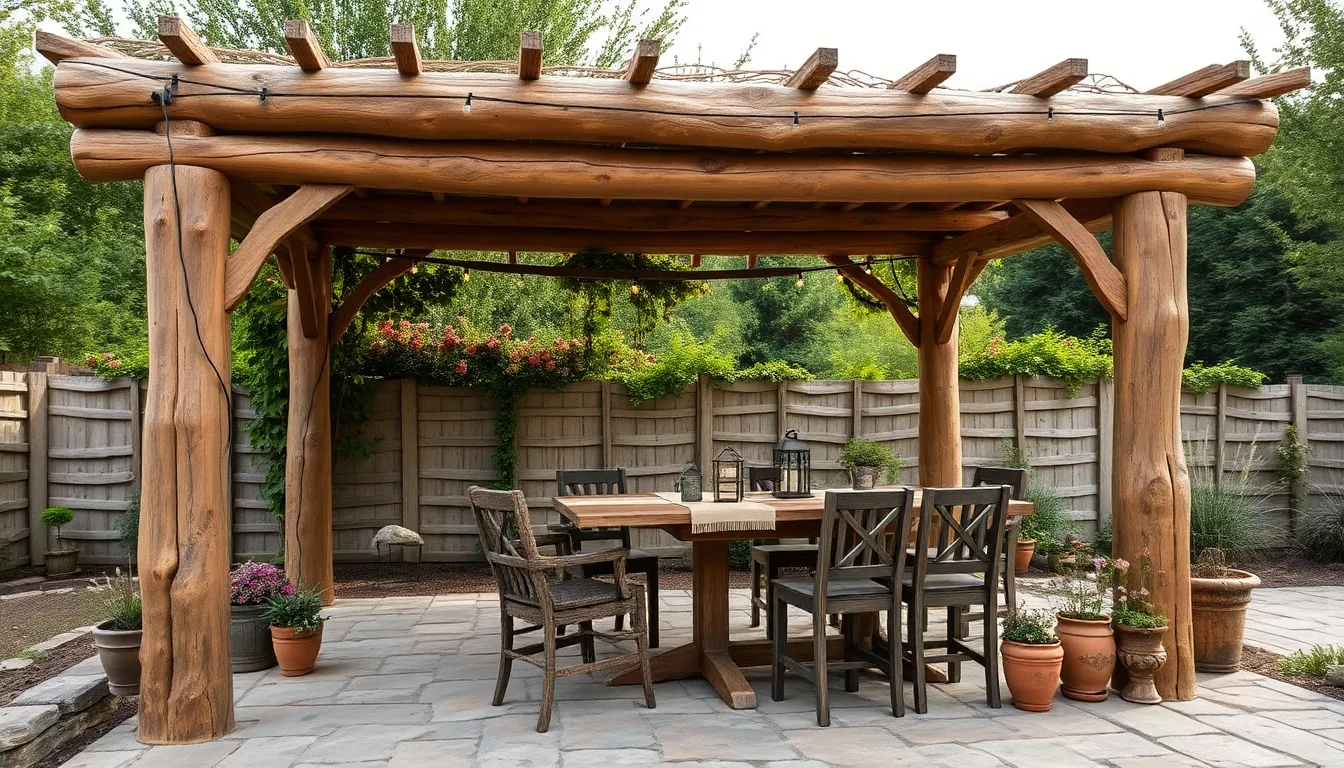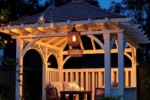There’s something truly special about a rustic pergola—its natural charm invites relaxation and adds timeless beauty to any backyard. Whether you’re a beginner eager to try your hand at DIY or an experienced homeowner looking for fresh inspiration, these ideas showcase how simple, natural materials can create stunning, durable structures that perfectly blend with your outdoor space.
You’ll discover practical tips that make building your own pergola approachable and rewarding, from selecting the right wood to mastering essential construction techniques. Get ready to transform your outdoor area into a cozy retreat that reflects your style and invites endless enjoyment for years to come!
Select Locally Sourced Wood

Choosing locally sourced wood for your rustic pergola not only supports sustainability but also ensures the material is well-suited to your climate. Opt for durable hardwoods like cedar, redwood, or cypress, known for their natural resistance to rot and insects. For beams and posts, select straight, knot-free pieces approximately 4×4 or 6×6 inches to provide sturdy support and a classic rustic look.
Before construction, treat your wood with a non-toxic, weather-resistant sealant to extend its lifespan and maintain its natural beauty. Advanced builders might consider incorporating reclaimed wood for unique character and environmental benefits, but ensure it’s structurally sound and free of pests. Remember to measure twice and cut accurately to achieve tight joints that enhance stability and aesthetic appeal.
Use Natural Vines for Shade
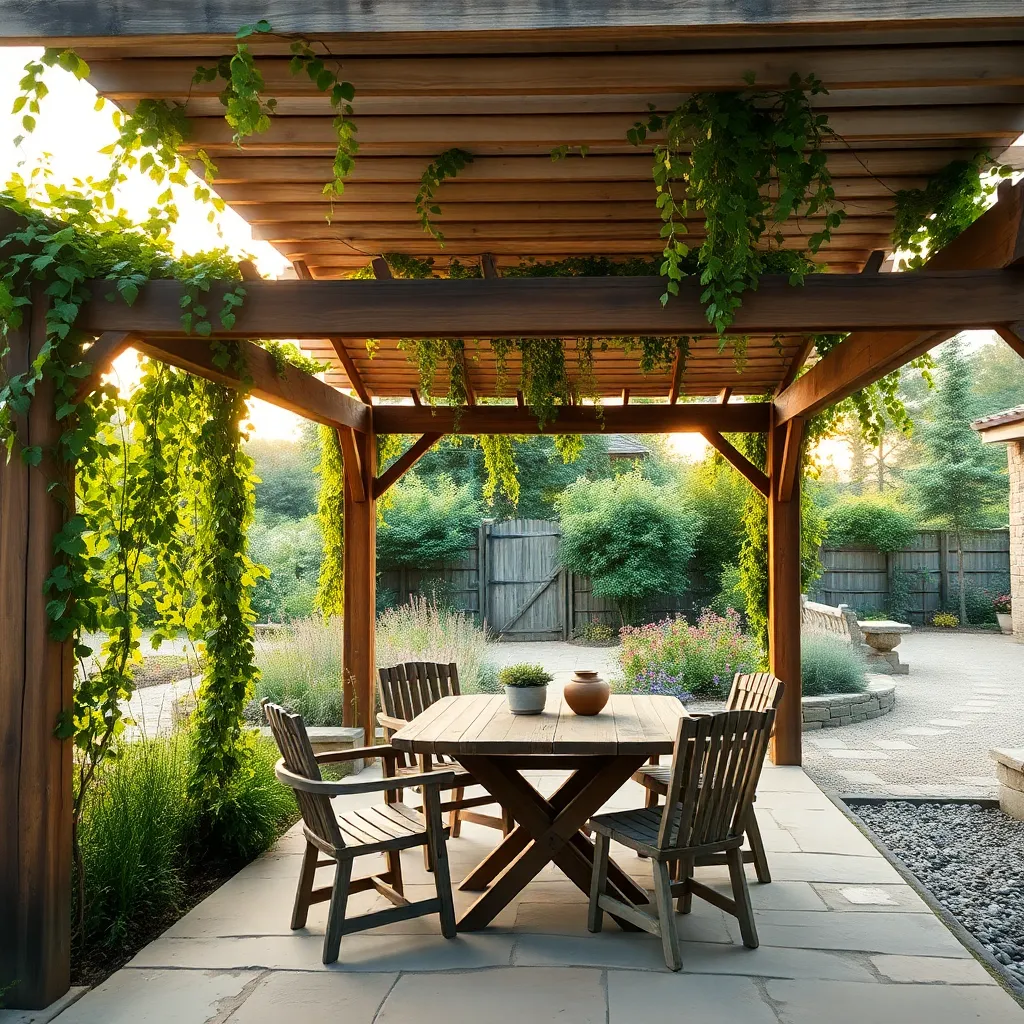
Incorporating natural vines like wisteria, grapevine, or clematis into your rustic pergola provides an organic shade solution that blends beautifully with wooden structures. Start by installing strong, weather-resistant trellis wires or lattice panels on the pergola’s beams to guide the vines’ growth and ensure even coverage. Remember to prune regularly to maintain airflow and prevent overgrowth, which can add both charm and functional shade throughout the warmer months.
For those seeking a more advanced touch, consider selecting fast-growing, hardy species suited to your climate, and position your pergola where the afternoon sun is strongest for optimal cooling. Use natural jute ties or soft garden twine to gently secure vines as they climb, avoiding damage to stems. This approach not only enhances the rustic aesthetic but also creates a sustainable, living canopy that evolves with your outdoor space.
Treat Wood with Eco-Friendly Sealant
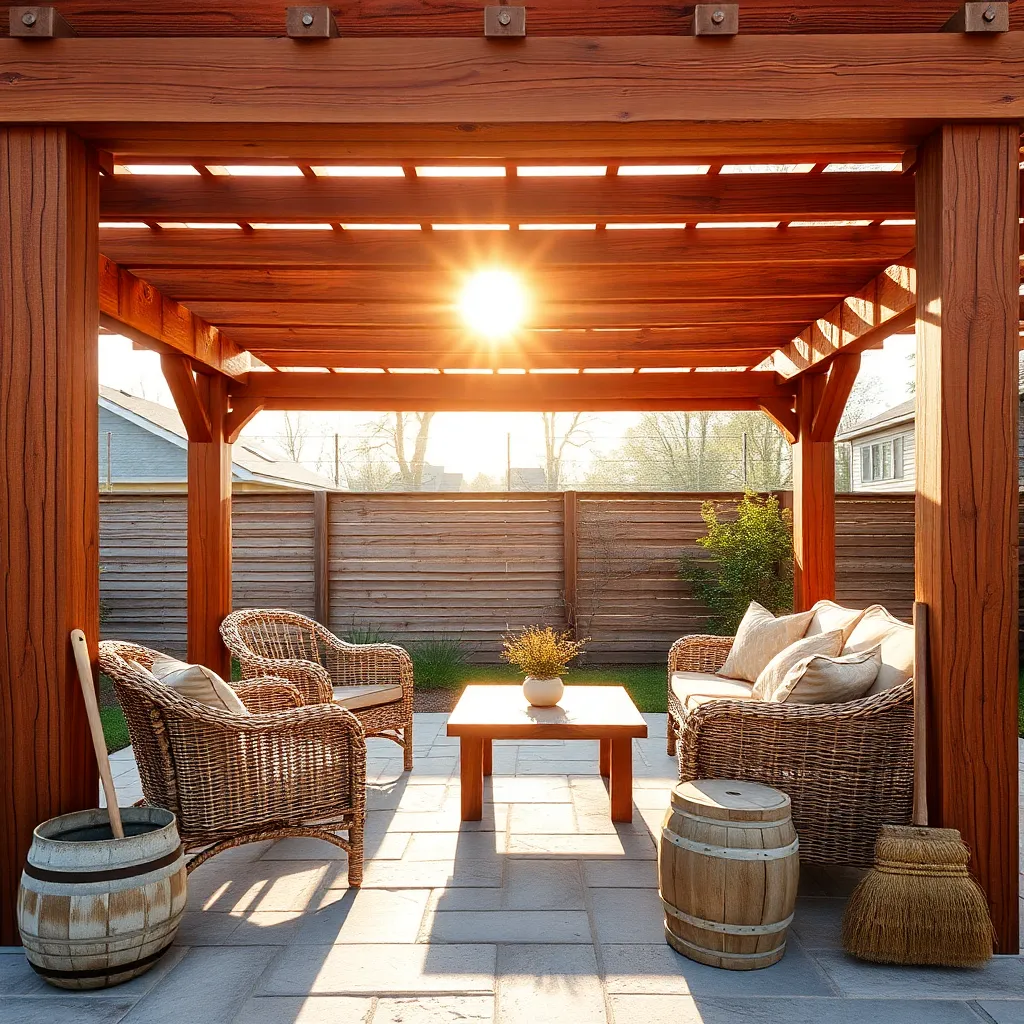
Protecting your rustic pergola wood with an eco-friendly sealant extends its life while preserving the natural aesthetic. Look for sealants made from plant-based oils or water-based formulas that offer UV protection and water resistance without harmful chemicals. Applying two coats with a brush or sprayer, allowing drying time between, ensures deep penetration and durable coverage.
For best results, treat all surfaces including undersides and edges to prevent moisture damage and insect intrusion. Advanced tip: lightly sand the wood before sealing to improve adhesion, and reapply every 1-2 years to maintain protection. This simple step keeps your natural materials looking fresh and sturdy in any weather condition.
Anchor Posts in Gravel Bases
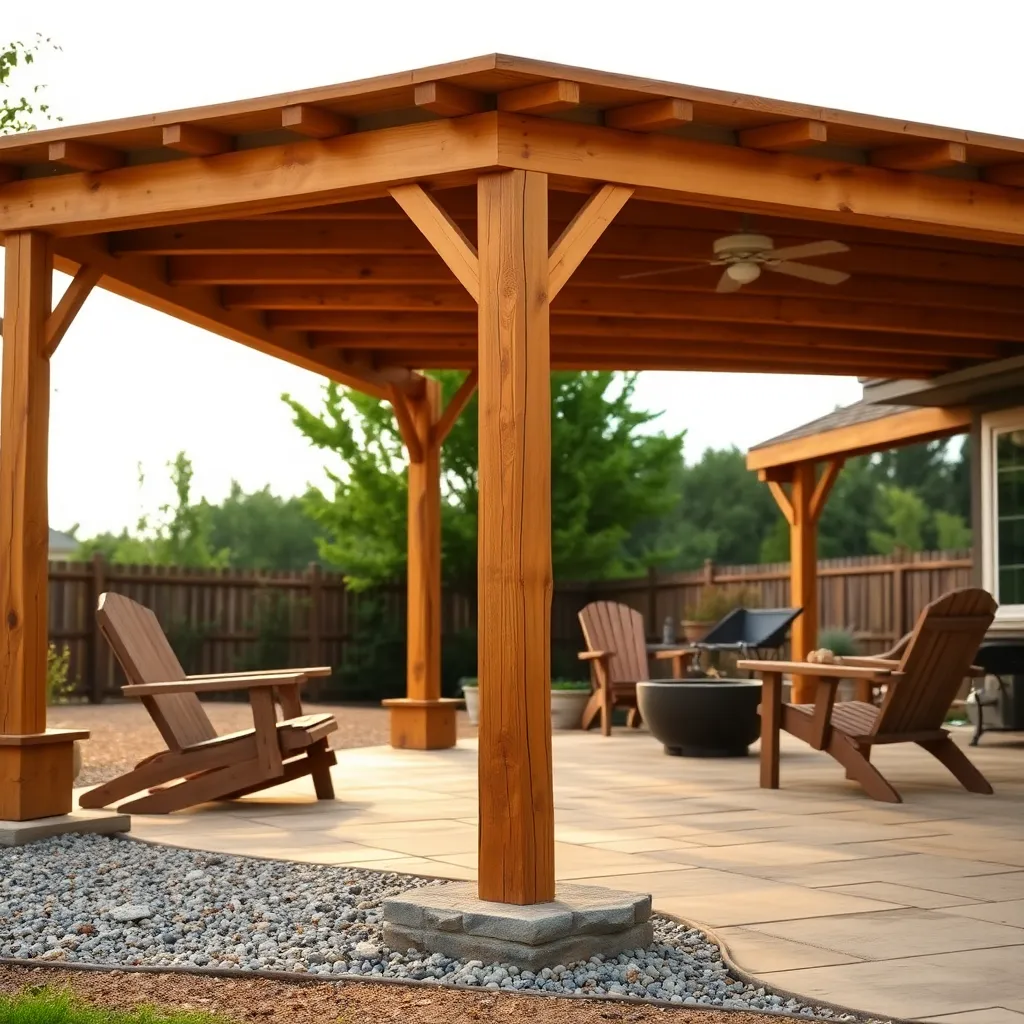
Anchoring your pergola posts in gravel bases is a smart way to ensure stability while promoting drainage and preventing wood rot. Start by digging a hole at least 18 inches deep and 12 inches wide for each post. Fill the bottom 4 to 6 inches with clean, coarse gravel before setting a treated wooden or metal post bracket; this creates a solid, well-drained foundation that keeps moisture away from the wood.
For an extra durable structure, use galvanized steel post anchors secured into the gravel base with concrete poured around the edges for added support. This method is especially useful for heavier pergolas built with thick natural logs or reclaimed wood. Remember to check level alignment frequently and allow concrete to cure fully before attaching your crossbeams to guarantee a long-lasting, rustic outdoor shelter.
Incorporate Rough-Hewn Branch Accents
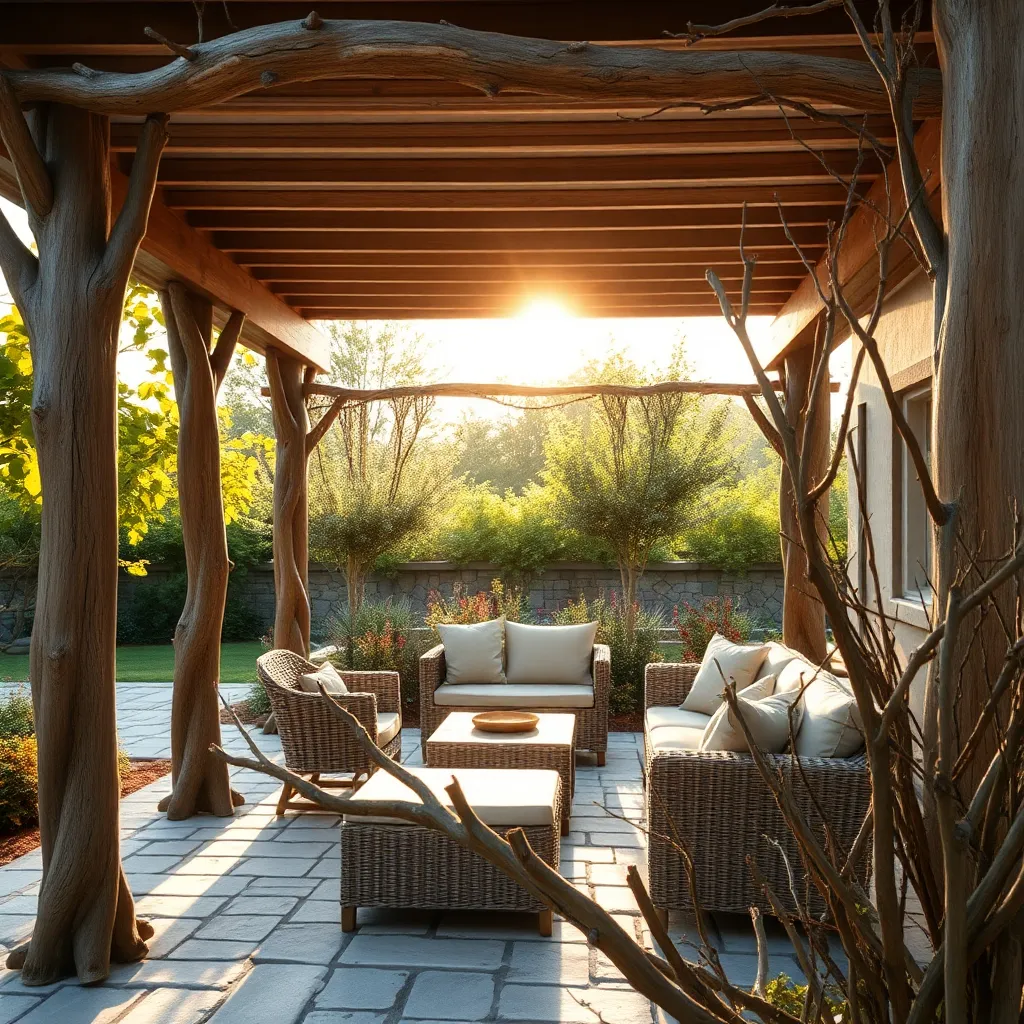
Incorporating rough-hewn branch accents into your rustic pergola adds authentic texture and natural charm that complements the structure’s overall aesthetic. Choose branches with a diameter of 2 to 4 inches for visible accents like crossbeams or decorative side rails, ensuring they are sturdy and free from rot. Use a hand saw or pruning shears to trim and shape branches, then sand any sharp edges lightly to maintain safety without losing the natural look.
For a polished finish, treat the branches with a clear, outdoor-grade sealant to protect against moisture and insects while preserving their rugged appearance. Beginners can start by attaching branches with galvanized screws or heavy-duty wood glue, while advanced DIYers might explore mortise and tenon joints for stronger, seamless connections. Remember to position accents where they enhance both stability and visual appeal, such as along the top framework or as rustic brackets beneath rafters.
Conclusion: Creating Beautiful Outdoor Spaces
Building a DIY rustic pergola with natural materials isn’t just about creating a beautiful outdoor space—it’s a powerful metaphor for nurturing your relationship. We explored five key concepts: embracing authenticity like natural wood’s unique charm, fostering teamwork through shared projects, cultivating patience as you shape each element, celebrating imperfections that make your bond uniquely yours, and grounding your connection in nature’s steady presence. Now, take a simple next step: gather a few natural materials together and brainstorm with your partner how you might craft your own pergola—or any shared project that brings you closer. This hands-on experience can deepen your communication and collaboration. Be sure to save or bookmark this article so you can return to these inspiring ideas whenever you need a gentle reminder to build your relationship with care and creativity. Remember, just like a pergola grows stronger and more beautiful over time, your relationship thrives when nurtured thoughtfully. You have everything it takes to create a loving, lasting partnership—one natural step at a time.

